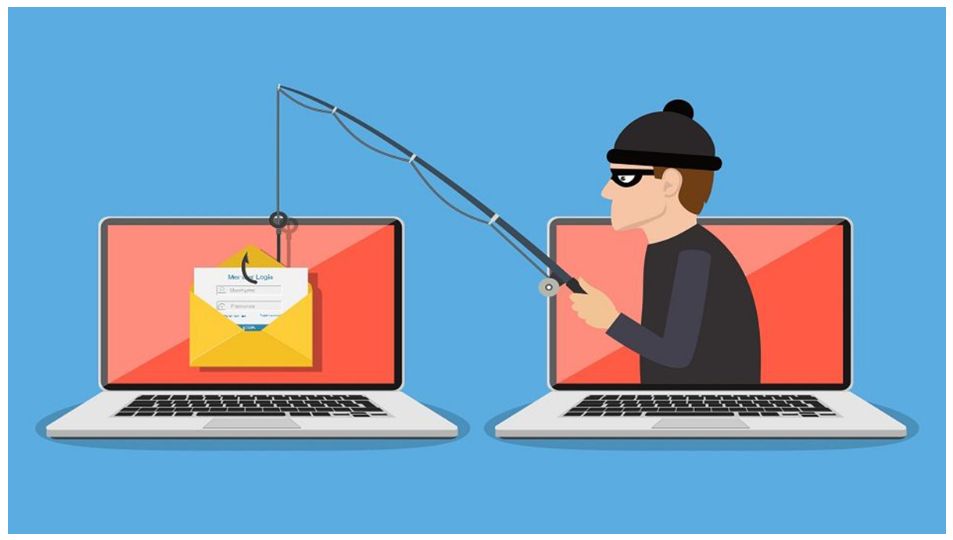https://www.corsicatech.com/blog/9-common-signs-of-a-phishing-attack/
What is “Phishing”?
The word phishing refers to the sending of e-mails that appear to have come from reliable sources like banks, utilities, social media sites etcetera but actually, they are only intended to trick the recipient into revealing their usernames, passwords, or bank details.
It’s important to prevent phishing because if you fall victim to a phishing attack, It is possible that you might lose your valuable data and your money. In order to avoid it make sure you access webpages only by writing their address directly in the browser window. So let’s dive into this blog, I have provided some tips and techniques for preventing phishing.
What are the types of Phishing Attacks?
In cybersecurity terms hacker is called a bad guy. He sends a phishing message that usually contains a link that leads to a fake webpage or installs malware on your device. It is the most common type of attack. It is so simple to fall into this attack. Some of the types of Phishing attack are as follow:
a. Spear Phishing: This attack is more based on a specific person in an organization. It is used to extract personal data and login credentials of a person.
b. Whale Phishing: It is mostly focused on high-profile positions like CEOs, Managers, or authority people. This type of attack is programmed in a way that seems the messages come from someone in the same organization.
c. Pharming is a type of phishing attack that takes advantage of the vulnerability in the Domain Name System (DNS) servers. Pharming attacks redirect users to a fake website even when correctly typing a URL in the web browser address bar.
d. Smishing is the most common type of attack in Australia. It targets mobile phone users through text messages pretending to be from a legitimate source, encouraging users to click on a link.
These are just a few of the many phishing attack methods used by cybercriminals. It is essential to be aware of such attacks and take measures to counter them.
How to identify a phishing message? Techniques for preventing Phishing attacks
Phishing messages are common and still actively involved. Even on these days I still get the phishing message twice a month or so. You can keep your information safe, and secure and avoid financial damages.
i. The first step is to Know more about Phishing attacks: Be aware of the new methods and techniques that are used by hackers for phishing. Educate yourself and share the pieces of information with others in your networks.
ii. Always think before you CLICK: It’s never a good idea to click on a link in an email or message that came from an unknown source. They make fake URLs that look real. If you can go directly to the website from a search engine, it’s best always to avoid clicking on links.
iii. Install Anti-Phishing browser: Installing anti-phishing browser extensions provides an additional layer of security. It helps you to identify and warns you about malicious sites. You can find free tools you can install on your devices. Avoid jumping into the warning sites.
iv. Do not use unsecured sites: If the website does not begin with “https” or does not have any security certificate and locations, then avoid entering your personal information. The address begins with “https://”, meaning that the transfer protocol is secure, and a closed padlock symbol should appear in the browser.
v. Rotate Passwords Regularly: Often used passwords and non-rotate passwords make it easy for attackers to gain an easy win. Regular password change limits the potential success of phishing attempts.
vi. Install Firewalls: Firewalls help prevent external attacks from infiltrating your computer. When used together, desktop, and network firewalls can provide increased security and limit potential damage from phishing attacks.
vii. The last one is, to say No to Pop-ups: Pop-ups aren’t just irritating; they could be connected to malware used in phishing attacks. Ad-blocker software is free and easy to use, automatically blocking most malicious pop-ups and making browsing a lot smoother.
Security Measures for Organizations
Phishing scams are not only a threat to individuals but can also be potentially disastrous for organizations. It’s crucial that organizations implement security measures to safeguard their sensitive data from these attacks.
One of the effective ways to prevent phishing is through Security Awareness Training. Companies can provide continuous training to their employees on how to identify and avoid these scams. Regularly testing employees’ knowledge of phishing techniques and their responses to them can help them stay vigilant.
Another crucial step is to Implement Multi-Factor Authentication. Two-factor or multi-factor authentication adds an extra layer of security by requiring users to present additional credentials beyond just a password.
In the same way, monitoring and Analyzing Network Traffic is another security measure that can help in detecting potential phishing attacks. Analyzing network traffic helps detect and block suspicious IP addresses, connections, and requests that originate from or point to phishing domains, thus preventing attacks.
Conclusion:
Phishing is a serious threat – anyone can fall victim to it. The best way to prevent it is to stay active and educated. Make sure to know what phishing scams look like, think before you click, use anti-phishing add-ons, and avoid giving information to unsecured sites.
In conclusion, Organizations should encourage reporting potential phishing attacks and decline suspicious emails. Remember, security awareness training and multi-factor authentication can go a long way in preventing attacks. Stay protected by rotating your passwords regularly, installing firewalls, and saying no to pop-ups. By following these techniques, you can stay safe from phishing attacks.

